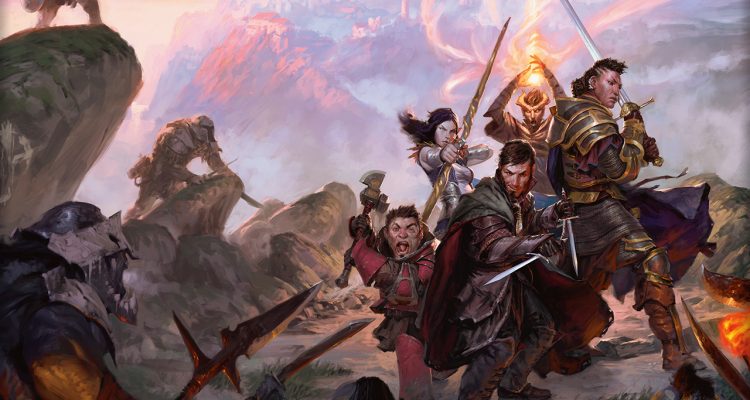As we prepare for the launch of Tasha’s Cauldron of Everying later this year, details of the new race rules have been released as part of a new Adventure League campaign.
Tasha’s Cauldron of Everything could bring about some of the biggest changes to Dungeons and Dragons that we’ve seen so far for 5th edition. It looks to tackle the stereotyping of races, which can limit the character creation process. By this, I mean that certain races are better for certain classes, if you want to make an optimised character that is. For example, Dwarves make the best fighters and barbarians because of their strength modifier, while Elves make for great rangers because of their Dexterity ability score increase.
I’m sure at some point we’ve all gone “I’d love to play a Dwarven Druid, but the stats just aren’t there.” Amends in Tasha’s new book will hopefully fix this, but with the release of the Plague of Ancients, a new Adventure League campaign, Wizards of the Coast have updated their AL ruleset with a new players guide, meaning we get a glimpse of what these changes are ahead of the book’s full release.
At 1st level, you choose various aspects of your character, including ability scores, race, class, and background. Together these elements help paint a picture of your character’s origin and give you the ability to create many different types of characters. Despite that versatility, a typical character race in D&D includes little or no choice—a lack that can make it difficult to realize certain character concepts. The following subsections address that lack by adding choice to your character’s race, allowing you to customize your ability scores, languages, and certain proficiencies to fit the origin you have in mind for your character. Character race in the game represents your character’s fantasy species, combined with certain cultural assumptions. The following options step outside those assumptions to pave the way for truly unique characters.
The traditional ability score improvements are now said to only be a suggestion. If you do indeed want to make the Dwarven Druid, you can, and they will be optimised too.
If you’d like your character to follow their own path, you may ignore your Ability Score Increase trait and assign ability score increases tailored to your character. Here’s how to do it: take any ability score increase you gain in your race or subrace and apply it to an ability score of your choice. If you gain more than one increase, you can’t apply those increases to the same ability score, and you can’t increase a score above 20.
The same goes for racial proficiences, meaning you can be a lot more flexible with the equipment you take and use at the start of the game.
Some races and subraces grant skill, weapon, or tool proficiencies. These proficiencies are usually cultural, but your character might not have any connection to the culture in question or might have pursued different training. You can replace each of those proficiencies with a different one, as shown on the Proficiency Swaps table.
To read the full amends featured in the new Adventure League campaign, head over to the Wizards of the Coast website. It will be interesting to see if this is what will appear in full in Tasha’s Cauldron of Everything later this year.


